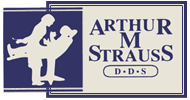Articles - Your Health Magazine, June 2009
Sleep Apnea :The Dental Relationship Between Sleep Apnea and Ease Of Swallowing, Speaking and Breathing
About eighteen years ago, when oral appliance therapy was considered “experimental”, a patient was referred to me after extensive ENT surgery and CPAP were ineffective in management of his severe obstructive sleep apnea. Oral appliance effectiveness
- had not yet established a track record in the medical literature to become official treatment,
- was inversely related to the severity of the sleep apnea,
- and was considerably less than it is now.
Not surprisingly, when the oral appliance approach was ineffective for this patient, more advanced ENT surgical procedures were attempted on the back of his tongue. When that failed, a tracheostomy was performed so that this patient could open the surgical entrance to his windpipe below his tongue when he wanted to be able to breath during sleep. In effect, his air intake was positioned below the tongue to bypass it when it would significantly block his throat during sleep.
While awake, muscle tone, controlled by adrenaline levels, was sufficient to allow him to get air through his mouth and nose and keep the surgical opening closed.
In prior articles I have shared with you my concerns about the increased adrenaline type hormone levels required to manage our “airways” and the cumulative impact of this on our health and well being. I won’t delve further into this now.
You can find these articles in Your Health Magazine archives. I only share this to illustrate the difficulties associated with severe apnea and anatomical impairment of airflow through the throat. This patient developed the sleep apnea symptoms after undergoing a cosmetic dental surgical procedure to shorten his lower jaw that was protruding in front of his upper jaw. Obstructive sleep apnea resulted because the airway had been unintentionally narrowed.
Narrowing of the throat occurred, because the lower jaw houses the tongue, and the base of the tongue is both directly and indirectly attached to the inside of the lower jawbone. This surgical procedure therefore, moved the whole tongue backwards into the throat.
I have been aware of this jaw shortening procedure since dental school; however, I was not aware of the potential negative impact of it on health and even survival in certain situations. Application of our knowledge of anatomy could predict this unfortunate outcome. Yet this information and concern was not part of the medical or dental literature at the time.
I want to leave you with a glimpse of the gap that exists in medical and dental research in the critical areas where the two professions meet - the throat. As you have also seen in my prior articles, I explain how the domain of dentistry controls the home and environment of the tongue and its primary functions involving swallowing, speaking and breathing. Farrand Robson, D.D.S. refers to this interrelation as “oral systemic balance.”
